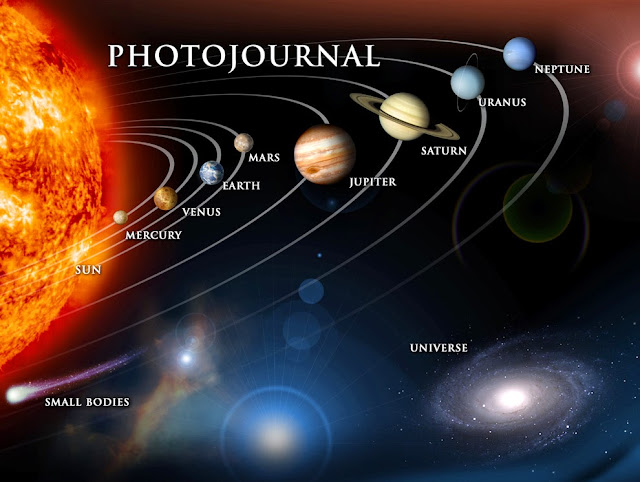‘Death Star’ Ocean? Seven Moons That Could Host Huge Hidden Liquid Reservoirs:

A view of Mimas from the Cassini spacecraft. Credit: NASA/JPL/Space Science Institute
Could there be an ocean hidden somewhere in that Death Star-like picture? This is an image of Mimas, a moon of Saturn, and just yesterday (Oct. 15) newly released data from the Cassini spacecraft suggests there are big liquid reservoirs underneath its surface.
“The amount of the to-and-fro motion indicates that Mimas’ interior is not uniform. These wobbles can be produced if the moon contains a weirdly shaped, rocky core or if a sub-surface ocean exists beneath its icy shell,” said Cornell University in a press release. More flybys with the Cassini spacecraft will be required to learn more about what lies beneath.
You can read more about the study (led by Cornell astronomy research associate Radwan Tajeddine)
in Science, where it was published. Below, learn more about other worlds in the Solar System that could host oceans under their surface.
Enceladus

Cassini images of Saturn’s moon Enceladus backlit by the sun show the fountain-like sources of the fine spray of material that towers over the south polar region. This image was taken looking more or less broadside at the “tiger stripe” fractures observed in earlier Enceladus images. It shows discrete plumes of a variety of apparent sizes above the limb (edge) of the moon. This image was acquired on Nov. 27, 2005. Image Credit: NASA/JPL/Space Science Institute
After nearly a decade of speculation, this year the Cassini spacecraft returned gravity data suggesting Enceladus (another moon of Saturn)
does have a large subsurface ocean near its south pole, if not a global ocean. If confirmed, that could help explain why scientists see water gushing out of fractures in that area. As this recent paper by Cassini scientists shows,
Enceladus is a promising location for habitability.
Titan

A halo of light surrounds Saturn’s moon Titan in this backlit picture, showing its atmosphere. Credit: NASA/JPL/Space Science Institute
By the way, anyone noticed that we still haven’t even left Saturn’s system? Titan is usually high on astrobiology wish lists for researchers because its hydrocarbon chemistry could be precursors to how life evolved. What’s not talked about as much, though, is at least two research findings pointing to evidence of a hidden ocean. Evidence comes from Titan’s
tidal flexing from interacting with Saturn — which is 10 times more than what would be expected with a solid core — and the way that it
moves on its own axis as well as around Saturn.
Europa

Rendering showing the location and size of water vapor plumes coming from Europa’s south pole. Credit: NASA/ESA/L. Roth/SWRI/University of Cologne
That Minecraft-looking object floating beside Europa there is a rendering showing where water vapor erupted from the Jovian moon,
spotted by the Hubble Space Telescope in 2013. We were lucky enough to have a close-up view of Europa in the 1990s and early 2000s courtesy of NASA’s Galileo spacecraft. What we know for sure is there’s thick ice on Europa. What’s underneath is not known, but there’s long been speculation that it
could be a subsurface ocean that
may have more water than our own planet.
Io

Jupiter’s volcanic moon Io , imaged by the Galileo spacecraft in 1997. Credit: NASA/JPL/University of Arizona
Still flying around Jupiter here, we now turn our attention to Io — a place that is often remarked upon because of its blotchy appearance as well as all of the volcanoes on its surface. A newer analysis of Galileo data in 2011 — looking at some of the
lesser-understood magnetic field data signatures — led one research team to conclude there could be a magma ocean lurking underneath that violence.
Triton

A glimpse of Triton from the Voyager 2 spacecraft, which flew by the Neptunian moon in August 1989. Credit: NASA/JPL
Little is known about Triton because only one spacecraft whizzed by it — Voyager 2, which took a running pass through the Neptune system in August 1989. An Icarus paper two years ago speculated that the
world could host a subsurface ocean, but more data is needed. The energy of Neptune (which captured Triton long ago) could have melted its interior through tidal heating, possibly creating water from the ice in its crust.
Charon

Hubble image of Pluto and some of its moons, Charon, Nix and Hydra. Image Credit: NASA, ESA, H. Weaver (JHU/APL), A. Stern (SwRI), and the HST Pluto Companion Search Team
We don’t have any close-up pictures of this moon of Pluto yet, but just wait a year. The New Horizons spacecraft will zoom past Charon and the rest of the system in July 2015. In the meantime, however, findings based on a model came out this summer in Icarus suggesting Charon — despite being so far from the Sun —
might have had a subsurface ocean in the past. Or even now. The key is its once eccentric orbit, which would have produced tidal heating while interacting with Pluto. The science team plans to look for cracks that could be indicative of “the structure of the moon’s interior and how easily it deforms, and how its orbit evolved,” stated Alyssa Rhoden of NASA’s Goddard Space Flight Center in Maryland, who led the research.


